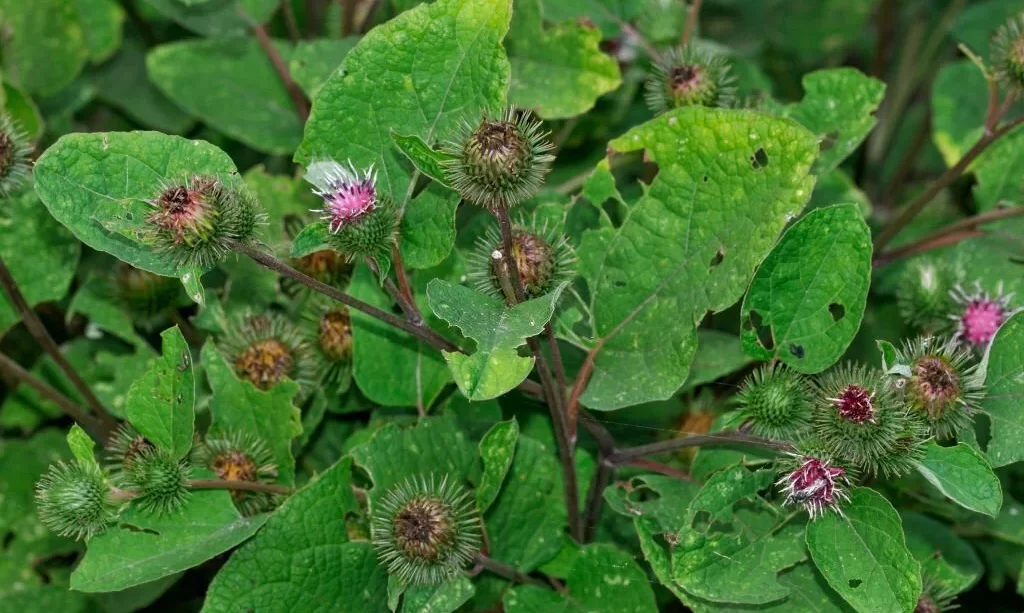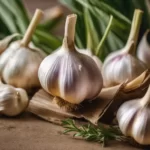Burdock, with its tenacious nature and infamous burrs, is a weed that gardeners and landowners often find themselves battling. Its stubborn presence can quickly take over your landscape, making it essential to understand how to effectively eliminate and prevent its return. In this comprehensive guide, we will delve into the world of burdock, providing you with the knowledge and techniques needed to bid farewell to this troublesome weed. From identifying burdock to employing manual removal methods, we’re here to help you take back control of your garden and outdoor spaces.
Identifying Burdock
To successfully eliminate burdock, you must first learn to identify it. Burdock plants are characterized by their large, heart-shaped leaves that can grow up to a foot in width. They have tall, sturdy stems that can reach several feet in height. One of the most distinctive features of burdock is its burr-covered seed heads, often referred to as “burrs”. These burrs can easily attach themselves to clothing, fur, or even human skin, making burdock both a literal and figurative thorn in the side of gardeners.
Identifying burdock accurately is critical because it enables you to target your efforts effectively. By recognizing its unique appearance, you can take the first step in combating this invasive weed and preventing it from establishing a stronghold in your outdoor spaces.
Manual Removal Methods
Manual removal methods are a hands-on approach to dealing with burdock infestations. Here are some effective techniques for getting rid of burdock:
Hand-Pulling:
One of the simplest and most immediate methods is hand-pulling. Put on gloves to protect your hands and grasp the burdock plant at its base. Gently but firmly pull the plant from the ground, making sure to get as much of the taproot as possible.
Digging:
For older or more deeply rooted burdock plants, consider using a shovel or garden fork to dig around the base. Lift the plant along with its taproot, ensuring you remove it completely.
Weed Wrench:
Another option is using a weed wrench, a specialized tool designed for removing stubborn weeds with deep roots like burdock. This tool provides leverage to uproot the entire plant without excessive effort.
These manual methods are effective for small-scale burdock control, especially in gardens or lawns. It’s important to remove burdock as soon as you notice it to prevent further seed production and the spread of this invasive weed. Manual removal may be labor-intensive, but it’s a practical and chemical-free way to reclaim your outdoor spaces from burdock’s grasp.
Chemical Control
Chemical control can be an effective method for managing burdock infestations, especially when dealing with larger or more widespread populations. Here’s what you need to know about using herbicides to combat burdock:
Choosing the Right Herbicide:
Selecting the appropriate herbicide is crucial. Look for herbicides labeled for use on broadleaf weeds, as burdock falls into this category. Herbicides containing active ingredients like 2,4-D or glyphosate are often effective against burdock.
Application Instructions:
Read and follow the label instructions on your chosen herbicide carefully. Proper application is key to success. Typically, herbicides are applied as a spray or directly to the foliage of burdock. Some herbicides are formulated for use in specific seasons or growth stages, so timing is important.
Safety Precautions:
When using herbicides, it’s essential to take safety precautions. Wear protective clothing, including gloves and eye protection, and use the herbicide in a well-ventilated area. Keep children and pets away from the treated area until it’s safe.
Environmental Impact:
Be mindful of the potential environmental impact of herbicide use. Choose herbicides that are less likely to harm non-target plants and wildlife. Follow the manufacturer’s recommendations for proper disposal and cleanup.
While chemical control can be an effective method for tackling burdock on a larger scale, it’s essential to use herbicides responsibly and with consideration for the environment.
Preventing Burdock Reinfestation
Preventing burdock from making a comeback is as important as removing it in the first place. Here are some strategies to keep burdock reinfestation at bay:
Mulching:
Apply a layer of mulch, such as wood chips or straw, to your garden or landscape. Mulch helps suppress weed growth, including burdock, by blocking sunlight and hindering germination. Ensure the mulch layer is thick enough to be effective, typically around 2-3 inches.
Regular Mowing:
If burdock has invaded your lawn or open areas, regular mowing can help prevent seed formation. This reduces the spread of burdock seeds and gradually weakens the plants.
Maintain a Healthy Landscape:
A healthy, well-maintained landscape is less vulnerable to burdock infestations. Fertilize and water your plants appropriately, and ensure they receive adequate sunlight. Healthy, thriving plants can better withstand weed competition.
Monitor and Act Swiftly:
Keep a close eye on your outdoor spaces and monitor for any signs of burdock returning. Act promptly to remove any new growth as soon as you spot it. Early intervention can prevent the weed from establishing a foothold.
By implementing these preventive measures, you can significantly reduce the risk of burdock reinfestation. A proactive approach to weed control will help you maintain the beauty and health of your garden or outdoor spaces.
Disposing of Burdock Plants
After you’ve successfully removed burdock plants, it’s crucial to dispose of them properly to prevent their return. Here’s how to ensure you get rid of them effectively:
Composting:
If your burdock plants have not yet gone to seed and are free from diseases or pests, you can add them to your compost pile. Make sure your compost pile reaches temperatures high enough to break down the plant material effectively.
Bagging and Disposal:
For burdock plants that have gone to seed or may be carrying diseases, it’s best to bag them up and dispose of them in the trash. Avoid tossing burdock plants or their seeds in your yard waste or compost, as this could lead to their reintroduction.
Natural and Biological Controls
In addition to manual and chemical methods, consider the use of natural and biological controls to manage burdock infestations. These methods are more environmentally friendly and can be effective in the long term:
Biological Control:
Some insects and animals feed on burdock plants. For example, the burdock weevil and the burdock seedhead weevil are natural predators that can help keep burdock populations in check. You can encourage their presence by creating habitats that support these beneficial insects.
Competitive Planting:
Planting competitive species that outcompete burdock can be an effective strategy. Species like clover or vigorous ground covers can create competition for resources, making it challenging for burdock to establish itself.
Regular Maintenance:
Maintaining a well-manicured landscape helps prevent burdock from taking hold. Regular mowing, weeding, and keeping your garden or lawn healthy can discourage burdock growth.
Conclusion
In the battle against burdock, persistence and vigilance are your greatest allies. Identifying, removing, and preventing burdock infestations are essential for maintaining the health and beauty of your outdoor spaces. Whether you choose manual, chemical, or natural methods, the key is to stay proactive and address burdock as soon as it appears.
By implementing the strategies outlined in this guide, you can effectively bid farewell to burdock and enjoy a weed-free environment. Remember that ongoing maintenance and a watchful eye are your best defenses against the return of this troublesome weed. With dedication and the right approach, you can successfully eliminate burdock and keep your landscape thriving.



